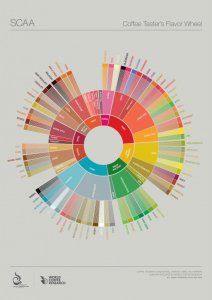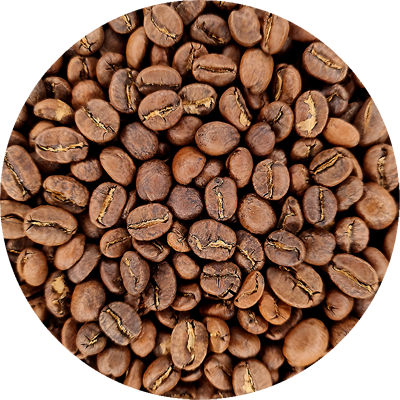Description
– Honduras SHG Calan – Arabica Coffee –
Honduras SHG Calan coffee grows in the picturesque, ecologically clean region of Honduras – Comayagua, where good soil and cool climate favor its slower ripening.
– Hand-picked, wet-processed and medium-level roasted to show off its most beautiful side, presenting a sweet and delicate aroma with distinct notes of chocolate, coconut and nuts.
– Very pleasant, low acidity and medium body.
– High mountain plantations, SHG – (Strictly High Grown) certificate guarantees that coffee is grown only on altitudes above 2000 meters above sea level.
Body:●●●○○ Acidity:●●○○○ Intensity:●●●●● Roast:●●●○○
Honduras SHG Calan
Crop: 2019
Grade: SHG – (Strictly High Grown)
Region: mountainous, hilly
Altitude: 2000+
Varietal: Bourbon, Catuai, Caturra, Pacas
Harvest: October – January
Processing: hand-picked, wet-processed
Aroma: nuts
Flavor: chocolate, coconut
Classification and awarding the coffee:
Specialty coffee is a product of the highest quality that has been awarded over 80 points on a scale of 1-100. Only genus Coffea Arabica can be awarded in this way. This species and grade of coffee is characterised by its remarkable aroma intensity and complex flavour unlike lower graded types.
Body:●●●●○
“Density / Oiliness” is a sensation occurring while examining a sip of a fresh and hot coffee. It is felt by checking the consistency of coffee: taking a small sip and leaving it on the tongue, optionally rubbing the tongue against the pallet.
Acidity:●○○○○
Acidity is a very important component of full coffee flavour. It doesn’t necessarily mean that coffee will be sour or astringent, it’s more felt as zesty and citrusy notes around the aroma. It gives a brew its character and sharper edge.
Intensity:●●●●●
Depth and richness of a brew, the force that Coffee delivers with the first impression. It’s a combination of intensities of all the flavours combined and definition of how invigorating it makes the drink. Lower intensity means that coffee will be milder and more about the aftertastes. Some consider high intensity of coffee as its weight or boldness. Especially well defined in mid-high roasts.
Roast:●●●○○
Roast is a short term for the longitude of the roasting process giving the coffee bean it’s true character.One coffee type can taste completely different depending on the roast and the altogether bouquet of aftertaste will give different notes. There are five commonly known levels of roasting : very low, light, medium. mid-high and high (or dark).
Delicate types like very low and light roast can be used in alternative extraction (using dripper filter, chemex or french press), but some appreciate them used in pressurices machines.
Medium roasts will give its complexity when used in Moka Pot and no more complicated machinery is needed.
Dark roast otherwise known as espresso type really benefits from using it in pressurised machines like italian coffee machines. Made that way it will give a dense espresso with lasting and prominent hazel-coloured créma.
General Informations
Flavour and notes:
In order to identify the flavour precisely with all its undertones, Speciality Coffee Association of America created a very interesting ‘notes circe chart’. It’s very useful for finding out the tastes and aftertastes without the need to be an expert. It’s commonly used in so-called coffee cupping. Shown underneath it a circle chart from 2016.

Notes circle chart – what is it and how it works?
There are thousands of chemical ingredients that result in the flavour of a coffee brew. It doesn’t come as a surprise than, that the coffee aftertastes, flavours and notes can be so versatile and complicated. Notes circle chart designed by Speciality Coffee Association of America recognises the most characteristic ones, laying the easiest to identify and strongest closer to the centre, while placing the more delicate an vague on the rear in a pallet-like structure. Using the chart as a key and following the notes from the middle to the rim , anyone can recognise the unique profile of coffee in question, not even being a connoisseur. This method of classification allows everyday coffee-drinkers to explore their favourite drink further, and turn the usual experience into something more meaningful and interesting.
Our method of packaging the coffee:
Our coffee is packed in an innovative and environmentally friendly “Aroma Save” bags that has been made not only to contain the original coffee aroma but not to introduce any new smells from the plastic and outside environment. The “ECO/Kraft” design are implemented with a ventilation system allowing the air to escape the bag but not to get inside. It also makes it possible to smell the coffee without the necessity to open the bag. The other system is a special zip-lock mechanism allowing 100% seal on the container and allowing to reopen the bag countless of times without the need of any other equipment.
The paper used in the making of our bags has been recycled and does not contain excessive prints to minimize the impact on the environment caused by dyes. Our company believes that the true importance in the product is it’s content not the wrapping, so the quality and freshness of our coffee is our major priority so thee container is the highest quality with its contents hermetically closed, safe from exposure and unwanted aromas.
Coffee making tips
For the best results, always try to grind the coffee just before using , bearing in mind the right grade corresponding with the type of the device that you want to use. Usually there’s no more than 1,5 – 2 teaspoons (around 7 gram ) needed for the cup.
Use water around 95 °C
Types of coffee grinding and its meaning:
Coffee can be ground in many different ways- using manual or electrical grinders
sometimes even mortar and pestle. What truly matters thou is not what device we will use but how fine it will be ground. There is a common conception that the longer the coffee grounds will be exposed to the brew, the coarser they should be. it is however rather vague and leaves questions. What matters than? The simplest answer would be – the style of brew and the brewing device. we can all conclude that if we want to pour the hot water over the coffee grounds , at some point it will be too fine and will create sort of ‘mud’ that will prevent the water from dripping. Therefore we can use very fine grind for any machine that creates pressure to help the water press trough. Moka Pots, Siphon Coffee Makers, AeroPresses and Espresso Machines will be our best bet than. If our coffee is coarser , than little to no pressure is needed to extract it. We can use a filter paper, a percolator or a thermal coffee maker than. For the coarsest grind it’s best to use a French Press. There are, however, examples that seem to be against this rule like Turkish Coffee Pots, that use very fine coffee powder added straight to the water.Then the pot is submerged partially in hot sand and the maker waits for the brew to rise and bubble, to take if off the heat. After the bubbles subside the process is repeated twice more. This is one of the oldest ways of preparing coffee, reaching way before the invention of all our modern devices, there’s no surprise than that if will feel exotic and our rules will not apply to it.
Coffee grinding devices: After stating that types of grinds are crucial to the making of perfect coffee, we can go to the details of the coffee grinding itself. The use of a certain coffee grinder is putting pressure on details, but sometimes we want nothing less tan perfection.
The most popular electrical grinders ale bladed ones. They are fast, but may overheat the coffee and make it release the essential oils too fast resulting in less aromatic brew. Way better and perhaps the perfect ones are the Mill grinders containing two abrasive surfaces or ‘teeth’. Its very important that they are made with non-corrosive metal. There are a few different types of mill grinders, but most of them allow us to change the grind. The more efficient and precise are the ones without any set programs, allowing us to fluently change the grind gradient. The wider the spectrum, the more different types of coffee we will be able to make.
If you want to get to know us better, check this page.
For more information on our products and weekly news please check our instagram and facebook page.








Reviews
There are no reviews yet.